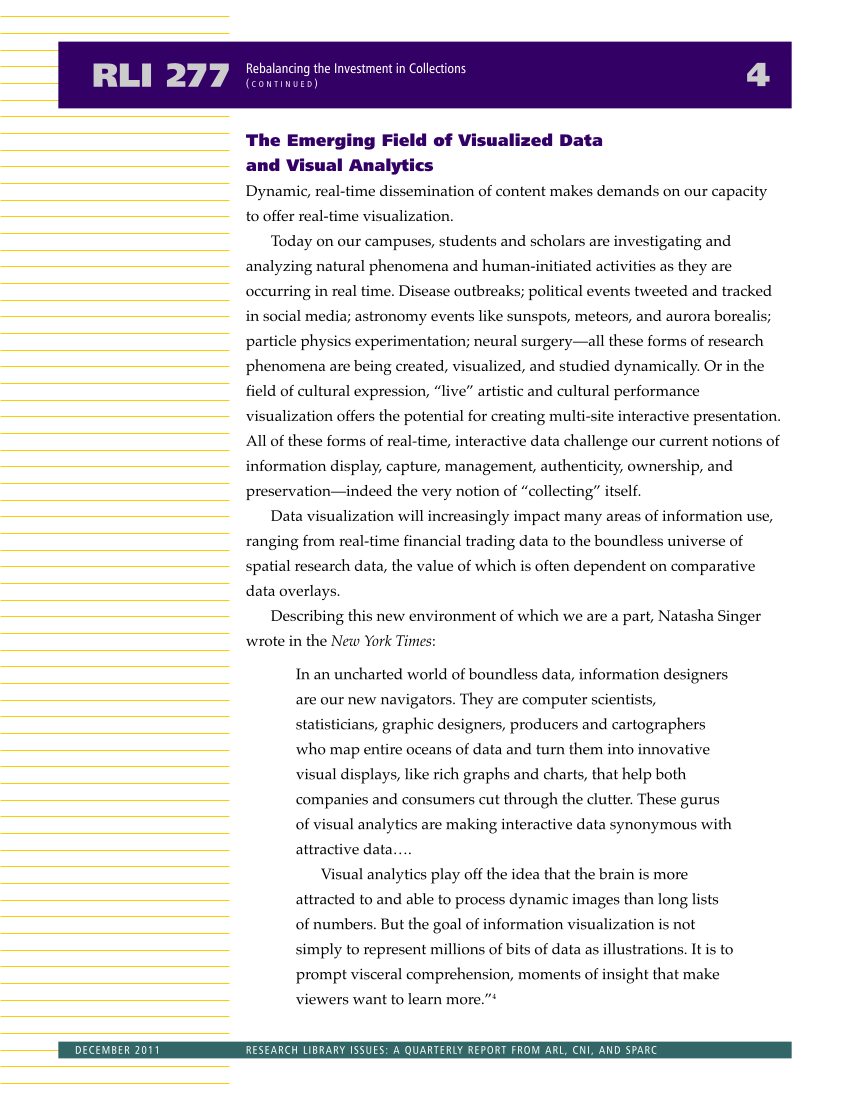The Emerging Field of Visualized Data and Visual Analytics Dynamic, real-time dissemination of content makes demands on our capacity to offer real-time visualization. Today on our campuses, students and scholars are investigating and analyzing natural phenomena and human-initiated activities as they are occurring in real time. Disease outbreaks political events tweeted and tracked in social media astronomy events like sunspots, meteors, and aurora borealis particle physics experimentation neural surgery—all these forms of research phenomena are being created, visualized, and studied dynamically. Or in the field of cultural expression, “live” artistic and cultural performance visualization offers the potential for creating multi-site interactive presentation. All of these forms of real-time, interactive data challenge our current notions of information display, capture, management, authenticity, ownership, and preservation—indeed the very notion of “collecting” itself. Data visualization will increasingly impact many areas of information use, ranging from real-time financial trading data to the boundless universe of spatial research data, the value of which is often dependent on comparative data overlays. Describing this new environment of which we are a part, Natasha Singer wrote in the New York Times: In an uncharted world of boundless data, information designers are our new navigators. They are computer scientists, statisticians, graphic designers, producers and cartographers who map entire oceans of data and turn them into innovative visual displays, like rich graphs and charts, that help both companies and consumers cut through the clutter. These gurus of visual analytics are making interactive data synonymous with attractive data…. Visual analytics play off the idea that the brain is more attracted to and able to process dynamic images than long lists of numbers. But the goal of information visualization is not simply to represent millions of bits of data as illustrations. It is to prompt visceral comprehension, moments of insight that make viewers want to learn more.”4 RLI 277 4 Rebalancing the Investment in Collections ( C O N T I N U E D ) DECEMBER 2011 RESEARCH LIBRARY ISSUES: A QUARTERLY REPORT FROM ARL, CNI, AND SPARC































